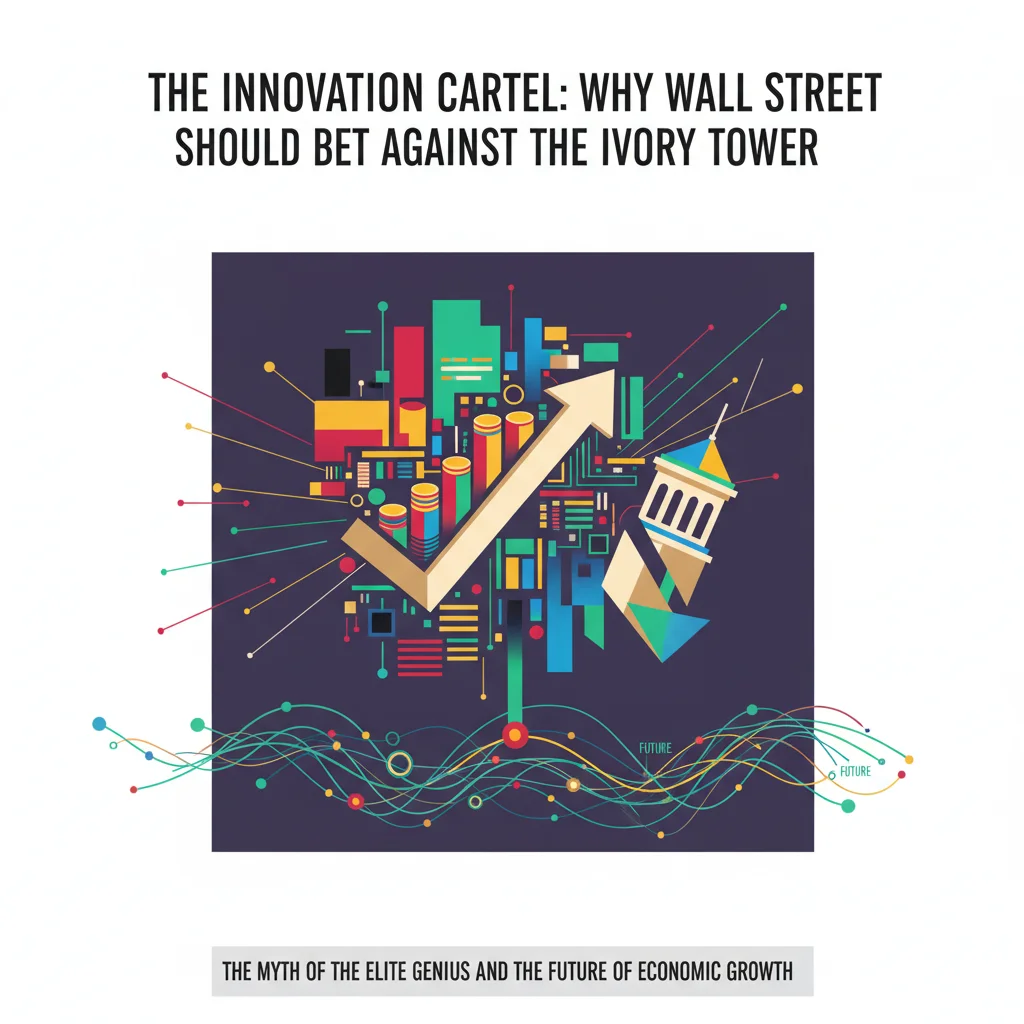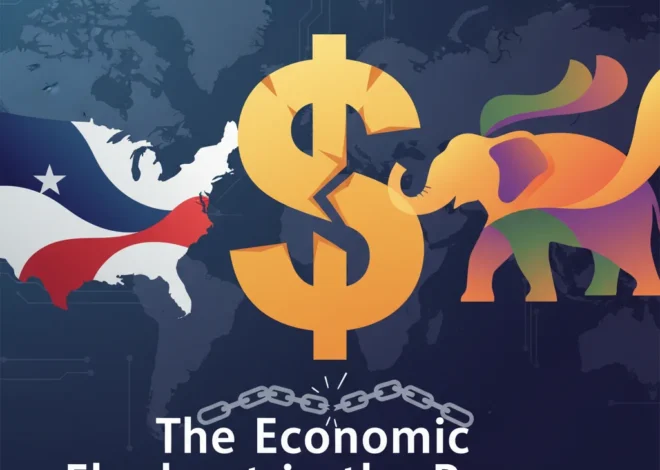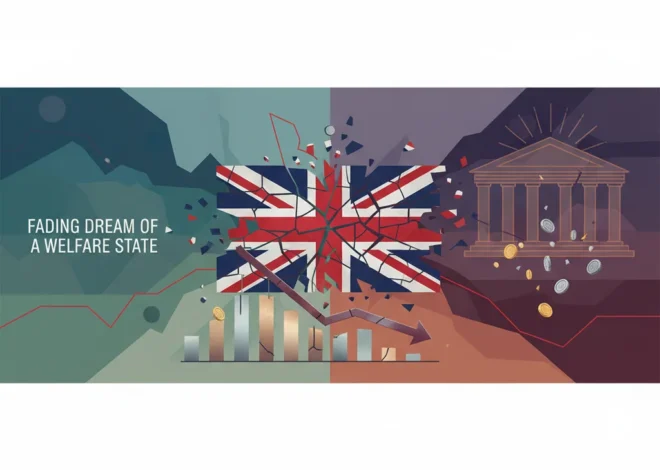
The Innovation Cartel: Why Wall Street Should Bet Against the Ivory Tower
The Myth of the Elite Genius and the Future of Economic Growth
We’ve all been sold a powerful story about innovation. It’s a narrative born in the hallowed halls of Ivy League universities, nurtured in the gleaming R&D labs of Silicon Valley giants, and funded by venture capitalists on Sand Hill Road. This story tells us that groundbreaking ideas—the kind that reshape industries and drive the stock market—are the exclusive domain of a select few. It’s a tale of elite institutions, brilliant minds, and closed-door breakthroughs. But what if this story is not just incomplete, but dangerously misleading for the future of our economy?
In a recent letter to the Financial Times, Stefaan Verhulst, a Research Professor at NYU’s Tandon School of Engineering, issued a stark warning. He argued that allowing “a small number of elite institutions to become the sole curators of the science and innovation agenda” is a critical mistake (source). This “closed-shop” approach, he suggests, stifles progress and fails to address the world’s most pressing challenges. While his point is academic, its implications for investing, corporate strategy, and global finance are profound. The very engine of economic progress is at risk of seizing up, not from a lack of ideas, but from a bottleneck of access and perspective.
This isn’t just a debate for scientists and policymakers. For business leaders, investors, and anyone involved in financial technology, understanding this shift is paramount. The next trillion-dollar opportunity is less likely to emerge from a predictable university spin-off and more likely to bubble up from a decentralized, open, and collaborative ecosystem. The era of the innovation cartel is ending, and a new, more democratic model is taking its place. The question is: are you prepared to profit from it, or will you be left holding onto outdated assumptions?
The Hidden Costs of a Concentrated Innovation Pipeline
The current model of innovation is heavily concentrated. In the United States, a mere 20 counties receive over half of all venture capital funding, with the top five metropolitan areas—San Francisco, New York, Boston, San Jose, and Los Angeles—dominating the landscape. A similar concentration is seen in federal R&D funding, where a handful of elite universities consistently receive the lion’s share. For instance, in fiscal year 2021, just 10 institutions accounted for over $10 billion in federal R&D obligations, representing a significant portion of the total according to the National Science Foundation.
On the surface, this approach seems efficient. It pools talent, resources, and capital, creating powerful hubs of discovery. However, this concentration carries steep, often hidden, costs:
- Intellectual Groupthink: When the same people, from similar backgrounds, educated at the same institutions, are tasked with solving problems, they tend to approach them in the same way. This homogeneity stifles creativity and can lead to entire fields of inquiry being ignored because they don’t fit the prevailing paradigm.
- Risk Aversion: Large institutions, whether academic or corporate, are inherently conservative. The pressure to publish, secure tenure, or meet quarterly earnings targets discourages high-risk, high-reward research in favor of safer, incremental advancements. Truly disruptive ideas are often seen as career risks.
- Geographic and Economic Disparity: By concentrating innovation, we create “innovation deserts”—regions starved of the investment, talent, and economic dynamism that follow. This exacerbates regional inequality and leaves vast pools of potential untapped, ultimately dragging down the national economy.
For investors, this concentration creates a systemic risk. By focusing capital on a small, overheated segment of the market, the financial system becomes vulnerable to bubbles and blind to opportunities emerging elsewhere. The next breakthrough in fintech or sustainable energy might not come from a Stanford PhD, but from a community of developers in Eastern Europe or a self-taught engineer in rural America. The current model is simply not designed to find them.
Beyond the Click: How AI in Advertising is Reshaping the Economy and Your Investment Portfolio
The Dawn of Distributed Genius: Open Source, Citizen Science, and Decentralized R&D
The alternative to the closed-shop model is not chaos, but a more dynamic and resilient system of distributed innovation. This new paradigm is built on principles of openness, collaboration, and participation, and it’s already reshaping entire industries.
Consider the world of financial technology. The open-source movement has been a critical driver of innovation. Projects like Linux and Apache created the foundational infrastructure for the modern internet, and today, open-source AI models from platforms like Hugging Face are democratizing access to cutting-edge technology that was once the exclusive domain of tech giants. This collaborative approach accelerates development, reduces costs, and allows for a global community to contribute to and improve upon a shared codebase. As a result, new fintech startups can build sophisticated trading algorithms or secure payment platforms without having to reinvent the wheel, drastically lowering the barrier to entry and fostering competition.
Beyond software, the concept of “citizen science” is proving its immense value. These are projects where the public participates in scientific research, from classifying galaxies (Galaxy Zoo) to folding proteins to fight diseases (Folding@home). These initiatives not only accelerate research by crowdsourcing data analysis but also engage the public directly in the scientific process. A 2022 study highlighted the massive potential of citizen science, noting its ability to generate vast datasets and tackle complex environmental and health challenges at a scale impossible for traditional research teams according to PNAS. This model can be applied to everything from market research to drug discovery.
Beyond the Tariff Talk: Deconstructing the New US Trade Deals and Their Ripple Effect on the Economy
The following table contrasts the traditional, closed model of R&D with the emerging open and distributed model, highlighting the strategic advantages for forward-thinking organizations.
| Metric | Traditional Closed-Shop Model | Open & Distributed Model |
|---|---|---|
| Talent Pool | Limited to internal hires and elite university graduates. | Global, diverse, and accessible; taps into a worldwide community. |
| Speed of Development | Often slow, bureaucratic, and siloed. | Rapid, iterative, and parallel; problems are solved 24/7 by a global community. |
| Cost of R&D | Extremely high capital expenditure on labs, salaries, and overhead. | Significantly lower; leverages shared infrastructure and volunteer/freelance contributions. |
| Source of Ideas | Internal brainstorming, limited by corporate or academic groupthink. | Crowdsourced from users, partners, and a global community, leading to more diverse solutions. |
| Risk Profile | Concentrated risk; a few large, expensive bets. | Diversified risk; many smaller, faster, and cheaper experiments. |
| Relevance to Market | Can become disconnected from real-world customer needs. | Inherently user-centric and responsive to immediate market feedback. |
A New Playbook for Investing in the Future
For the astute investor and the forward-thinking business leader, this paradigm shift is not a threat but a monumental opportunity. It requires a new playbook, one that looks beyond traditional credentials and institutions to identify and nurture innovation wherever it may arise.
For Investors:
- Invest in Ecosystems, Not Just Companies: Instead of solely focusing on individual startups, consider investing in the platforms and infrastructure that enable open innovation. This includes open-source software foundations, decentralized data-sharing platforms built on blockchain, and companies that provide tools for distributed collaboration.
- Redefine Your Due Diligence: Traditional metrics, like the founders’ alma mater, are becoming less relevant. A more effective approach is to evaluate the strength and engagement of a project’s community. How active is its GitHub repository? How vibrant is its Discord channel? These are the new indicators of a project’s health and potential.
- Look for “Negative Space”: Identify industries still dominated by a few large, slow-moving incumbents who rely on closed R&D. These sectors, from traditional banking to pharmaceuticals, are ripe for disruption by nimble, open-source-powered challengers.
For Business Leaders:
- Embrace “Permeable” Boundaries: Break down the walls between your internal R&D teams and the outside world. Launch innovation challenges, actively participate in and contribute to open-source projects, and build partnerships with academic institutions beyond the top 10. The success of many modern financial technology firms is built on this very principle of leveraging external APIs and platforms.
- Incentivize External Collaboration: Create frameworks to reward external contributors. This could range from bug bounties for software to prize-based competitions for solving complex engineering problems. This turns R&D from a fixed cost into a variable, results-driven expenditure.
- Become a Curator, Not Just a Creator: Your company’s competitive advantage may no longer come from owning all the intellectual property, but from being the best at identifying, integrating, and scaling innovations from a distributed ecosystem. This is a fundamental shift in corporate strategy that prioritizes agility and network effects over secrecy and control.
The transition away from an elite-driven innovation agenda is not just a philosophical ideal; it is an economic imperative. The complex challenges we face—from climate change to global health crises and the need for a more inclusive financial system—are too vast and intricate to be solved by a small, homogenous group of thinkers. We need a diversity of perspectives, experiences, and expertise. By democratizing the process of discovery, we unlock the full potential of human ingenuity and create a more resilient and dynamic global economy. For those in the world of finance and investing, the message is clear: the future won’t be invented in a handful of ivory towers; it will be built by a global network. It’s time to invest accordingly.


